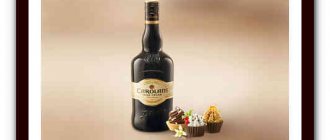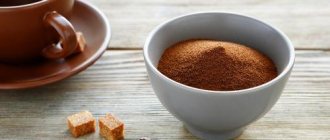Business etiquette: 11 mistakes in treating guests in the office.
Creator: Vera Kobzeva
Office cordiality culture
We see a culture of business visits developing in the business sphere. Business people make appointments with each other, invite new, potentially exciting partners to their office for business conversations, negotiate with regular Clients, and themselves pay visits to partners to discuss various aspects of business life. An optional but desirable attribute of such business meetings is the refreshment of guests in the office. A tea and coffee corporate culture is becoming a good idea.
Business etiquette as a system of symbols, rituals and rules prescribes cordiality. Offering tea and coffee to guests in the office is a delightful opportunity to show accommodation, get things done, highlight a willingness to cooperate and be seen as a human being.
When receiving guests for the first time in the office and during regular business meetings, a joint tea or coffee ceremony allows you to show respect, relieve tension, and create a more comfortable and inviting atmosphere. A joint meal between the owner of the office and guests acts as a unifying moment and at the same time sets the mood for constructive interaction. When thinking about the ritual of treating guests in the office, we must not forget that it accompanies business communication. There is no need to be like one of the heroes of I.A.’s fable. Krylov’s “Demyanov’s ear”, who treated another against his will.
When to treat guests
Business etiquette advises offering tea or coffee to guests in the following situations:
1. The guest arrived on time for a planned meeting in the organization’s office, for example, for a reception with the manager or for negotiations with key employees. If the meeting is delayed, then in this case the secretary, assistant manager or employee of the delayed employee offers the guest tea or coffee.
2. Before the business meeting in the meeting room.
3. In the middle of a long conversation, 1 - 1.5 hours after the first treat.
4. During a break at meetings, negotiations, conferences.
Common mistakes
Excellent manners consist of a huge number of provided little things. That’s why details and subtleties are important when showing office cordiality. Here is a list of common mistakes when treating guests in the office. All employees of the company who receive guests in a business setting are purposefully introduced to them. After all, the secretary responsible for hospitality may suddenly be absent or have an urgent assignment. In this case, instead of him, other employees, including the director, will have to take on the responsibility of treating the guests.
1. The manners of the employee serving food for guests are almost as important as the taste of the food. From time to time you can hear a phrase pronounced with an indifferent intonation: “What do you want? Tea coffee?" In accordance with the laws of business etiquette, intrigue and a desire to serve are fundamental. It is better to use the phrase: “Let me offer you tea or coffee.”
2. A mistake is not preparing clean dishes and treats. Therefore, it is necessary to have a sufficient amount of tea, coffee, sweets, cookies, and dried fruits in stock. If the owner of the office knows the tastes and habits of the guests, then purposefully take them into account. Guests will probably see and appreciate such attention.
3. When receiving a delegation, an offensive mistake would be to confuse which guest ordered what. To avoid misunderstandings, purposefully write down your wishes in a notebook.
4. Business etiquette, unlike social etiquette, is aimed at the status of participants in communication. For this reason, it is unacceptable to confuse the order of serving guests. First, you need to serve a treat to the senior guest and your own leader. Then to all the ladies from the guests’ side, to all the men from the guests’ side. After that, you need to serve the employees of your own company in the same order.
5. Unfortunately, in modern offices you can often see that a guest is served a cup that already contains a cardboard bag of tea. This is a grave mistake. Firstly, it is unhygienic. Secondly, it is not clear what strength of tea the guest prefers. Bagged tea can be served to guests if each bag of tea is packed in a separate bag. In this case, each guest independently opens the bag, removes the wrapper and puts the bag in his cup.
6. Perhaps the most common mistake when serving bagged tea is the absence of a special vessel on the table designed for bags removed from cups. In this case, the guest has to put the used bag on a saucer. A “puddle” appears on the saucer. When you lift the cup, drops of tea form on its bottom. The guest may stain his own suit, documents lying nearby, etc.
7. It is not customary to give guests lump sugar, sweets, cookies, lemon slices, placing them on a saucer on which a cup stands. It's awkward, ugly and unhygienic. If you decide to show real hospitality to your guests, then you need a sugar bowl with tongs, sockets with treats, a plate with lemon slices with a special two-pronged fork.
8. An incorrect serving technique such as serving a cup and saucer with a napkin between the cup and saucer is often encountered. The correct option is to place the napkin on the table next to the cup in the form of a triangle, if a napkin holder is not provided.
9. The placement of a tea or coffee pair on the table matters. It will be awkward for the guest if you place a tea or coffee pair at a greater distance from him. The correct approach: place the cup with the handle to the guest’s right hand, and behind it put a tea or coffee spoon, the edges up, with the handle perpendicular to the seated person’s right hand. With all this, it is necessary that the serving employee touches the surface of the cup and saucer with his fingers as little as possible.
10. It is not good to set out dishes and treats and remain silent. Excellent manners will be emphasized by the word “Please”, pronounced with a grin.
11. Violation of the sequence of cleaning the table after the end of the tea or coffee ceremony is also a mistake. First, it is customary to remove used dishes and cutlery, and then everything else. You cannot carry used dishes and napkins, sugar, sweets, etc. on the same tray.
If you, as a representative of the company, make a mistake when treating guests in the office by chance or out of ignorance, then a guest with business etiquette will never show it or comment on your mistake. To show cordiality and excellent business manners, be guided by the principles of necessity and aesthetic appeal.
A modern office, table setting in accordance with business etiquette, elegant dishes and delicious treats are designed to convey the positive style of the company to partners and clients. But it is important to understand that even down to the details, thoughtful cordiality does not compensate for the disappointment of office guests if unscrupulous secretaries told them the wrong address of the office, the parking lot guards were rude, the meeting began later than planned, and the company staff took a competitive position in the negotiations.
How does employee culture impact business performance?
What does an inadequate business style of staff lead to?
How are business etiquette trainings useful?
You will find details here -
- Business etiquette for secretaries and assistant managers
- Manager's etiquette arsenal
- Business etiquette and successful style of an employee of a modern business organization
“Vera Kobzeva has been a professional business coach of management and communication skills since 1996. You can study the programs and choose a training in the “Trainings” section.
LiveInternetLiveInternet.
-Music
-Tags
-Categories
- Aphorisms, humor (397)
- From the world by thread (1)
- Libraries (92)
- Beads.Decorations. (83)
- Videos (41)
- Age is not a barrier (2)
- Around the world (191)
- Around the world - Abkhazia (49)
- Around the world - Great Britain, Ireland, Scotland (158)
- Around the world - Germany (42)
- Around the world - Greece, Cyprus (58)
- Around the World - Europe (146)
- Around the world - Egypt, Israel, Türkiye (145)
- Around the world - India, China, Japan, Thailand (87)
- Around the world - Italy (208)
- Around the world - Baltics, Scandinavia (7)
- Around the world - Our homeland (507)
- Around the world - Our homeland. Moscow and Moscow region. (1449)
- Around the world - Our Motherland. St. Petersburg and its suburbs (331)
- Around the world - USA, Canada. South American continent (55)
- Around the world - Ukraine (104)
- Around the world - France (221)
- Baked goods - not sweet (338)
- Baked goods - no bake (33)
- Baking - sponge cake, pudding (45)
- Baked goods - buns, puff pastries, buns, waffles (167)
- Baking - in lavash (85)
- Baked goods - cupcakes, muffins, cupcakes (334)
- Baking - baskets, tartlets (81)
- Baked goods - flatbreads, khachapuri, chebureki, belyashi (118)
- Baked goods - mannik (44)
- Baked goods - cookies, bagels, bagels (325)
- Baked goods - pies (114)
- Baked goods - pies with apricots, peaches, bananas (53)
- Baked goods - pies with pineapple, orange, lemon (27)
- Baking - pies with grapes, plums, currants (34)
- Baked goods - pies with cherries and cherries. (95)
- Baked goods - strawberry pies (21)
- Baking - pies with apples, pears (286)
- Baked goods - pies (52)
- Baked goods - cakes (43)
- Baked goods - pizza (105)
- Baking - dance. (6)
- Baking - donuts, brushwood (100)
- Baked goods - profiteroles, eclairs (39)
- Baked goods - sweet rolls (23)
- Baking - with cottage cheese (45)
- Baked goods - with chocolate, condensed milk, jam (44)
- Baking - dough, glaze, cream, baking secrets (159)
- Baking - cakes (147)
- Baked goods – strudel, honey cake, Napoleon (76)
- Embroidery (331)
- Embroidery - alphabet, clock (41)
- Embroidery - biscorn, pendulums, needle beds (63)
- Embroidery - hemstitch, hardanger.bargello (69)
- Knitting for non-models (34)
- Knitting and fabric (55)
- Crochet - fillet - curtains, pillows, on (21)
- Crochet - fillet - border (60)
- Crochet - fillet knitting (129)
- Crochet - lampshades, covers (17)
- Crochet - pineapples (34)
- Crochet - angels, butterflies, hearts (90)
- Crochet - continuous knitting (32)
- Crochet - boleros, tops, blouses, vests (248)
- Crochet - brooches, beads, decorations (47)
- Crochet - Bruges lace (78)
- Crochet - fans, umbrellas, bags, covers (92)
- Crochet - darts, collars, pockets, yokes (48)
- Crochet - jackets, cardigans, coats (110)
- Crochet - needle beds, baskets, boxes (51)
- Crochet - toys, balls, snowflakes, eggs (45)
- Crochet - border, lace, corners (190)
- Crochet - cosmetic bags, organizers, handbags (50)
- Crochet - suits, dresses, sundresses (87)
- Crochet - ribbon lace (19)
- Crochet - motifs, patterns (440)
- Crochet - capes, ponchos, fooling around (76)
- Crochet - bedspread, pillows, rugs, seat (60)
- Crochet - potholders, cup holders, flowers (126)
- Crochet - pullovers, tunics (258)
- Crochet - napkins, tablecloths (157)
- Crochet - sundresses, dresses, suits (92)
- Crochet - knitting secrets, connections, patterns (172)
- Crochet - Tunisian crochet (36)
- Crochet - fillet - napkins, tablecloths (56)
- Crochet - loin - tops, tunics, suits, with (68)
- Crochet - hats, hats, scarves, mitts, mittens (120)
- Crochet - Skirts (87)
- Knitting - boleros, pullovers, tops, tunics (52)
- Knitting - jackets, cardigans, coats (73)
- Knitting - dresses, sundresses, skirts (11)
- Knitting - ponchos, stoles, capes, scarves, sha (50)
- Knitting patterns, knitting secrets (230)
- Decor of objects, gifts (82)
- Decoupage (67)
- Kids.Knitting - mittens, hats, scarves (24)
- Kids.Knitting - sets (10)
- Kids.Knitting - sweaters, skirts (18)
- Babies.Knitting - booties (19)
- Kids.Knitting - dresses, sundresses (72)
- Kids.Knitting - blankets, envelopes (27)
- Kids. Knitting. (16)
- Babies.Nutrition. (22)
- Kids. Development. (65)
- For a diary, for a computer (163)
- Ladies in history (349)
- ZhZL (84)
- Magazine – Burda, Crochet (167)
- Magazine - Doublet (103)
- Magazine - Sabrina, Sandra, Diana (80)
- Magazine – Napkins,Ondori,Crochet (57)
- Magazine - Handicraft formula, Valya-Valentina (27)
- Magazine - Wonderful hook (88)
- Journal-cross stitch (34)
- Magazine-Cinderella, Elena (9)
- Magazines and books (81)
- Magazines and books on cooking. Grocery school. (264)
- Health - gymnastics for joints (163)
- Health - gymnastics for the figure (87)
- Health - recipes (59)
- Health.Nutrition (18)
- Health.Herbs (1)
- Health. Self-care. Hair. (46)
- Toys (101)
- Toys - hares (54)
- Toys - cats and dogs (53)
- Toys - dolls, tildes (85)
- Toys - bears and mice (57)
- Toys - secrets of production (22)
- Toys - sign of the year (37)
- Games, flash drives (61)
- Interior.Renovation.Design (151)
- Art.Antiques (56)
- Art. Ballet and opera. (181)
- Art. Yesenin Sergey, Duncan Isadora. (72)
- Art.Painting.Statue (206)
- Art. Literature. Biographies. (153)
- Art.Fashion. (104)
- Art.Music (325)
- Art.Music. Mikhailov.Domogarov.Pelageya. (64)
- Art.Music.Guitar.Jazz.Saxophone. (135)
- Art.Music.Lena Vaenga (36)
- Art.Music.Romance.Blues.Tango. (447)
- Art.Cartoons. (3)
- Art.Poetry (317)
- Art. Pushkin A.S. (242)
- Art. Crafts and folk crafts. (102)
- Art.Glass,porcelain (90)
- Art. Theater and cinema (181)
- Art. To be remembered (222)
- Art. Jewelry – Faberge (83)
- Art. Jewelry, stones, minerals (269)
- History (14)
- History of things, titles, expressions (264)
- History of Russia (809)
- History of Russia - dynasties (157)
- History of Russia - Decembrists and their wives (239)
- History of Russia - Romanovs (385)
- History of Russia before the Romanovs (275)
- History of Russia. I am proud of the glory of the forefathers (288)
- Calendar (424)
- Boxes and caskets (72)
- decorated (23)
- sewn (17)
- Cooking. Dumplings, dumplings, manti. (66)
- Cooking.Pancakes.Pancakes.Pancakes. (188)
- Cooking. Dishes in pots. (102)
- Cooking. Mushrooms. (73)
- Cooking.Desserts (317)
- Cooking.Desserts - ice cream, sorbet, granita (277)
- Cooking.Desserts - tiramisu and panna cotta (65)
- Cooking. For children. (2)
- Cooking.J Oliver,Gore Ramsay (43)
- Cooking. Preparations (173)
- Cooking. Snacks - canapés, sandwiches (176)
- Cooking. Cabbage. (55)
- Cooking.Potatoes (531)
- Cooking. Coffee and tea. (217)
- Cooking.Chicken.Turkey.Goose. (555)
- Cooking. Butter, milk products, eggs (178)
- Cooking. Meat, cutlets, meatballs. (255)
- Cooking.Drinks (147)
- Cooking.Vegetables. (436)
- Cooking.Pasta. (122)
- Cooking. 1st courses - puree soups (60)
- Cooking. Cool first courses (35)
- Cooking. 1st courses. (199)
- Cooking. Picnic. Barbecue. Shashlik. (52)
- Cooking. Spices and herbs, spices (161)
- Cooking.Rice.Grains. (67)
- Cooking.Fish and seafood. (281)
- Cooking.Salads (497)
- Cooking.Secrets, substitution of goods (100)
- Cooking.Smoothies (96)
- Cooking. Sauces, dressings, batter, vinegar. (596)
- Cooking. Stalik Khankishiev. (41)
- Cooking. Cheese and wine. (85)
- Cooking.Fruits.Berry. (103)
- Culinary dictionary (27)
- Legends and Legends.Bible.Ancient Greece and Rome (270)
- Mysticism.Signs (246)
- Monasteries, cathedrals, churches of the world (58)
- Monasteries, cathedrals, churches in Moscow and Moscow region (193)
- Monasteries, cathedrals, churches of Russia (117)
- About cats (107)
- Vegetable garden on the balcony.Flowers (94)
- Easter (79)
- Easter cakes, Easter eggs (43)
- Handicrafts, decorations (36)
- Orthodoxy (276)
- icons (72)
- prayers (19)
- holidays (33)
- saints, saints, sufferers (73)
- Orthodoxy - fasting, Lenten cuisine (44)
- 2nd (2)
- baking (13)
- salads (3)
- soups (2)
- Appliances.Air fryer (41)
- Equipment.Blender. (21)
- Appliances.Microwave.Multi-cooker (173)
- Appliances. Steamer (26)
- Appliances.Bread machine.Bread (150)
- Will need (39)
- Proverbs (126)
- Secrets (11)
- Secrets of wearing scarves, storing them (107)
- Secrets - cleaning, washing, stains (153)
- Secrets of serving and etiquette. (99)
- Learning arithmetic (25)
- Learn British (220)
- Learn Italian (18)
- Learn Russian language (115)
- Backgrounds and schemes (23)
- Photos (52)
- Photo - architecture (28)
- Photos - food, products (33)
- Photos - abandoned towns (12)
- Photo - my beast (446)
- Photos - landscapes (35)
- Photo flowers (84)
- Photoshop (27)
- I wish (14)
- Sewing (169)
- sundresses, tunics, dresses, skirts (42)
- cases,for storage (34)
- seams, secrets, buttons (45)
- curtains (16)
-Search by diary
-Subscription by e-mail
-Statistics
Business etiquette: How to serve coffee and tea correctly.
Business etiquette: How to serve coffee and tea correctly
The nuances of setting a coffee table at a business meeting (note to the secretary)
*Brew traditional loose leaf dark tea and natural ground coffee. The introduction of tea bags is unacceptable.
*Pour tea and coffee in a special room; it is not customary to do this in a meeting room.
*Preheat the coffee utensils to a temperature of + 40? C. Brew the coffee just before serving. The drink is considered “alive” during the first 3 minutes – until the foam loses its ability to contract when broken.
*Put the spoon under the handle of the cup, which should be turned to the right and parallel to the edge of the table.
*Put sugar on a spoon. There is no need to put the sugar bowl on the table.
*Do not place the napkin on the saucer under the cup.
*Pour tea or coffee into the cup 2/3 full.
*Put the same number of cups of coffee and tea on the tray so that each meeting participant is able to make their own choice.
*Start offering tea and coffee 5-10 minutes after the start of negotiations.
*If you understand the preferences of the meeting participants, you can place a cup of coffee or tea on the table before the person sitting. If you don’t understand, then offer with a grin: “Tea? Coffee?"
*Place and remove cups from the table to the person’s left.
*Offer the first cup to the guest-manager, the second to the owner-manager, the third and fourth to the guests in subordination (remember that the right side is the honorary side), the fifth and sixth to the employees of the receiving party.
*Candies and cookies in vases, sliced lemon with a two-pronged fork, place napkins on the table after all the cups have been placed.
*Serve milk and cream in a separate milk jug. Remember that milk does not mix with lemon, bergamot and green tea.
*Start removing dishes from your guests.
*After about an hour, offer tea and coffee again.
*Also offer your guests water, juice, mineral water, preferably chilled.
Essential office serving set
So that the arrival of business guests does not come as a surprise to you, buy the necessary office serving set:
— Tea and coffee sets — Serving table on wheels — Tray — Teapot with strainer — Sugar bowl — Lump sugar tongs — Milk jug — Candy bowl — Napkin holders
How to properly serve tea and coffee in the office.
Distribution of tea and coffee to company guests occurs as follows. A secretary with a tray or cart containing refreshments usually appears 5-10 minutes after the start of negotiations. The cups are placed on the table first. Then - sweets, cookies, sliced lemon, to which a two-pronged fork is applied, napkins. If sweets are served in vases, then they must be in pieces of paper. Or they serve sweets in open boxes. Obviously, all products must be expensive, high quality. Dry cookies (not kurabye) should be served in a vase.
Tea and coffee are boiled and poured outside the door, not in the meeting room on a side table. Tea should be traditional, black - not in bags and not greenish. Ground coffee.
It is customary to place the same number of cups of coffee and tea on the tray. This is done so that each participant in the negotiations can give preference to their favorite drink.
Usually the secretary, offering a treat, asks with a grin: “Coffee? Tea?". The negotiator points to what he wants. The secretary usually knows about the preferences of his employees and constant partners, so he simply places a cup of coffee or tea on the table in front of the person sitting.
According to the advice of the Department of Municipal Protocol of the Ministry of Foreign Affairs, the cups are placed on the table to the left. They also clean up on the left. The spoon is placed under the handle of the cup, which is turned towards the right hand. Place two pieces of sugar on a spoon. Sugar bowls, as before, are not put on the table. Do not place a napkin on a saucer under a cup. Pour approximately 2/3 or even 3/4 of a cup.
By the way, if a meeting takes place with the role of an interpreter, tea is served to him first. When a business conversation begins, the translator simply will not have time to drink tea. Otherwise, maybe he will have time to take a few sips while you serve tea to others.
Don’t forget about the order of service: first you serve food to the senior guest and your own manager, then to all the ladies from the guests’ side, to the men from the guests’ side, and then you serve the employees of your organization in the same order.
The dishes are cleared away from the guests first. Ashtrays are changed by covering them with a napkin.
The second time you can offer tea and coffee after about an hour. In this case, the dishes are not removed.
The Ministry of Foreign Affairs protocol for distributing tea and coffee is described here. In office life, everything is different. Therefore, each secretary makes his own choice: try to persuade the manager to general traditions or accept office nuances as a given.
source: “Secretariat in Questions and Answers”
Tea is a psychostimulant
Tea is considered a psychostimulant, as it increases and accelerates many psychological processes and sharpens the functioning of the analyzers of the emotional organs. In particular, it increases vision. In general, tea increases the sensitivity and receptivity of the nervous system, increases reaction speed, promotes the assimilation and memorization of new information, and simplifies concentration and attention switching. Tea speeds up the thinking process and there has been a connection between drinking tea and creative thinking.
Immediately tea is an antidepressant, a means of increasing mood. But drinking too much strong tea is harmful to the nervous system. An overdose of strong tea may result in the effect of “tea intoxication,” which is accompanied by euphoria, talkativeness, laughter and other symptoms that appear during mild intoxication.
Business etiquette for serving coffee.
The first memory cannot be made a second time, and this applies to many areas of our lives. The concept of business etiquette helps to create a positive image in the eyes of others. In companies striving for excellence, they know and respect the laws of cordiality adopted in the business environment, since the ability to welcome clients and business partners is a fundamental element of style. The offices of modern companies strive not only not to violate these laws, but also to implement them in the best possible way. Large companies even teach staff the basics of etiquette when receiving guests and clients. There are even individual employees (coffee ladies) whose responsibilities include making and serving coffee to the company’s clients and partners.
An important role in business etiquette is played by the serving of coffee and tea during negotiations or a coffee break. Based on the characteristics of the company, one or another type of treat is offered. In huge stores, food dispensers, car services, in other words, everywhere where there is a large flow of customers, coffee machines are installed. This is the most common method to provide an additional level of customer service. But if we are talking about a company or office of the highest level, where every client is dear and valued, a treat is not just a symbol of attention, but also an indicator of the level of the company, corporate identity and respect for the client. Many companies decorate serving items with company logos - this increases prestige.
Rules for preparing the drink
An important rule of real coffee is that the beans must be freshly roasted. The degree of roasting is determined by how bitter you like the drink. Long-term storage of beans significantly worsens the taste and aroma of coffee. Roasting at home is labor-intensive, so it is better to buy beans in special stores.
Grinding the grain is also important. What it will be like depends on the method of preparation - in a Turk, in a cup, in a French press or a drip coffee maker. If you grind coffee at home, set the necessary parameters for your type of coffee pot or coffee machine - the number of beans to grind, the duration of grinding. After grinding, the coffee begins to sharply lose its aroma, so grind only as much as you need 1-2 times. There is no point in creating reserves - the coffee will lose its smell and go rancid, becoming damp.
How do you know how much coffee you need per serving? As a rule, the norm is 1-2 teaspoons per 150-200 ml of water. You need to get double strength not by increasing the coffee, but by decreasing the concentration - brew the same couple of spoons, but with 90 ml of water. Weak coffee has a watery and unexpressed taste, while excessively strong coffee can affect the central nervous system - adjust the intensity according to how you feel.
Rules for preparing the drink
Coffee is a product that forms the basis of many drinks. It is quite easy to prepare: in a coffee pot, pour boiling water over the ground coffee and place it over low heat, without bringing it to a boil.
Water usually boils at a temperature of 100 degrees and goes through three stages. First: bubbles rise from the bottom of the coffee pot, and they are also noticeable on the walls. The second is that the water turns white and boils with a white spring, without gurgling. It is this stage that is needed for coffee. Boiled water (third phase) is not suitable for coffee, nor is it suitable for tea.
Important: coffee is not boiled, but brewed, and so that when it is ready, it does not cool down so quickly, the coffee pot is first rinsed with boiling water, after which coffee is poured into it from a Turk or coffee maker.
The drink should be strained and served. Never overdo it with coffee; you should not consume too much of it, as it affects the nervous system.
Coffee produces a whole range of drinks - espresso, latte, cappuccino, Americano, glasse, mochaccino, flat white, raf. They differ in the proportions of coffee and milk, the presence or absence of foam, and additives in the form of ice cream, cream, syrups, and chocolate.
When to serve
There are several moments when it is customary to serve tea or coffee: 1. The guest has arrived for a scheduled meeting, but its start is delayed for any reason - it will help brighten up an uncomfortable pause and start the conversation on an abstract topic. 2. Before a business meeting in the meeting room - puts you in a business mood and helps you cheer up. 3. In the middle of a long conversation, an hour and a half after the first treat, during this pause the guests classify and brainstorm the results of the conversation. 4. During a break during meetings, negotiations, meetings, guests will communicate with each other in an informal setting.
Coffee drinking and health
If you drink coffee too often, it causes anxiety, fever, and disrupts your heart rhythm. Coffee lovers, beware! Instant coffee should not contain chicory; their mixture is not beneficial for the body and can have a negative effect on the body.
One or two cups of the drink a day will not do any harm unless you have any special contraindications. The main thing is to drink high-quality and properly prepared coffee, and under no circumstances use 3-in-1 coffee mixtures with flavors and additives.
Pregnant and lactating women should exercise caution and, if giving up coffee is not possible, drink it weakly with milk. Caffeine has a stimulating effect and can negatively affect the nervous system of mother and baby - through the umbilical cord or breast milk.
Coffee drinking and health
What to Serve
The coffee to be served should be traditional, certainly of good quality, freshly roasted and freshly ground, under no circumstances soluble, without flavoring additives. Coffee should be served with a glass of cool water and cream in a personal package. Tea can be offered to choose from - dark or greenish. Sugar must be served with black tea, even if it will not be touched. To greenish - it is better to check with the guests.
The quality of coffee cannot be compromised. If you use an espresso machine, then choose special consistencies for espresso. We recommend professional consistency Fiore, Donizetti or Paganini. As a worthy candidate, we suggest using high-quality coffee from plantations. To make it, both an espresso machine and a filter coffee maker are suitable. The second option is even better, as you will amaze your guests with an unusual and very tasty coffee. And of course, the coffee must be freshly roasted. Gone are the days of drinking “just coffee.” The opportunity to experience coffee in different countries has made people picky in choosing the variety and production method. Coffee lovers are turning into connoisseurs.
Basic rules for serving coffee in coffee shops
Proper serving of coffee in any establishment is the key to a successful business. The taste of the drink is important to clients, but a beautiful and correct presentation is a sign of respect for the guest.
Generally accepted rules:
- The coffee is not ground in advance: the grinding, while it sits, will absorb extraneous odors and the drink will not be as aromatic.
- The hot mixture is served in a preheated cup. The temperature of the liquid poured into a cold cup drops, which has a negative effect on the taste. Espresso is always served in a heated cup - the same standard.
- Americano and Cappuccino are prepared only before serving to the visitor. A few minutes after preparation, the drink loses its unique aroma, and an oxide film appears on its surface.
- A glass of clean water is served with invigorating coffee. Drinking water before drinking a hot drink helps refresh your taste buds.
- Refined sugar is served with the drink or several packets of sugar are left next to the cup.
- To sweeten the coffee, there should be a compliment on the saucer - cookies, meringue or candy.
If the cafe has a lot of visitors, some rules are simplified or not followed so carefully. How different types of coffee are served
Coffee shop staff must prepare coffee according to all rules and serve it in a timely manner so that it does not get cold. The classic hot drink is not poured into a bowl, but is prepared in a serving container. It is served at a temperature of 65-70 °C.
If you are making espresso, serve it with a cup of clean water. Serving without sweeteners is allowed, although sucrose enhances the energizing effect of caffeine. New or specialty drinks are made easier to serve.
Espresso and ristretto
The serving methods for espresso and ristretto are the same. The drink is poured into a heated cup, then the waiter brings it to the client. The spoon should be on the left side. The cup is on the saucer. On the right side of the plate there should be a compliment from the establishment. Sugar should be on the right side of the saucer or on the table - not far from the cup.
Professional coffee shops always offer a glass of water with ristretto and espresso. The capacity of the cup with the drink should be 30-40 ml. When serving, turn the handle of the cup to the left for the convenience of the guest. The drink should be around 75-85 °C.
For you:
Turkish coffee recipes
Americano
Espresso diluted with hot water is called Americano. Depending on the method of mixing the components, the foam takes on a certain appearance and shape. In the cup, the finished drink should reach 75-85 °C. It is served in a Latte glass with a straw. You should give 1-2 packets of sugar or a whole sugar bowl.
In small coffee shops, Americano is prepared in paper cups. Serving in a tall cup with a long spoon is allowed. Chocolate, cheese, fruit are suitable as snacks.
Cappuccino and Latte
An Irish glass is used to serve Cappuccino to the client. It is placed on a saucer. Be sure to bring out the sugar bowl and napkins. For Latte, use a larger cup, for Cappuccino, a smaller one. The visitor is offered a long spoon or straw. In restaurants, the waiter brings a spoon and straw.
The Irish glass is comfortable to hold in your hand. The handle must be turned to the right to make the client comfortable. Coffee of Italian origin is heated to a temperature of 60 °C. The classic portion does not exceed 180 ml. Some Starbucks offer Latte and Cappuccino in a 500-600 ml glass.
Cold drinks – Affogato, Frappe and Glace
Frappe and Glace are united by the temperature when serving and a portion of espresso or Americano inside. Frappe is served as a soft drink or a complete treat. The mixture is poured into a tall glass glass. The drink is decorated with whipped cream. A spoon is placed next to the glass.
Glace is served in the same way as Frappe. The glass does not have handles, so it does not matter how the waiter places it on the table.
Any medium or large restaurant offers visitors aromatic Affogato. It is served in a wide glass glass with a handle. Her waiter turns to the right for the convenience of the visitor. Coffee dessert is convenient to consume with a long spoon.
Cappuccino cups are often used for serving, but ice cream bowls are a more profitable option. The coffee base should have a temperature of 70-80 °C. A scoop of ice cream is added to it.
Alcohol and coffee – serving Irish coffee, coffee with cognac, Coretto
The Irish drink Irish is served in a special Irish glass. Its capacity is 240 ml. Baristas sometimes choose other clear glasses with handles. Irish should be served with a cinnamon stick. Since the container is shaped like a glass, it is worth bringing it to the client on a saucer. A long spoon will allow you to mix all the ingredients.
Irish's delivery is simple. A spoon is needed to mix layers of foam, coffee and alcohol. There is no point in snacking on Irish coffee, as it acts as a full-fledged warming drink.
For you:
The art of drawing on coffee: original latte art technique
Preparing coffee with cognac does not take much time. The waiter brings out the drink in a standard cup. The cocktail is decorated with whipped cream: they are laid out in the form of a hat. Sometimes the treat is served in glass mugs.
The tradition of serving Coretto comes from Spain and Italy. Brandy and grappa are often added to the drink. The visitor must first select the type of alcohol included in the cocktail. A common method of serving: a cup of espresso is given and a glass of alcohol is taken out separately. The client independently decides how to mix the components and in what proportion. It is appropriate to offer a packet of sugar with this cocktail.











